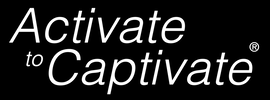 The current situation has left many people scrambling to figure out how to communicate online. This includes giving presentations for defenses, conferences, meetings, etc. If you find yourself having to present online, here are five things to keep in mind. 1. Goal What do you want people to learn? Since people are all tuning in remotely, people have far more distractions around them including kids in the other room, animals at their feet, etc. Therefore, having a clear goal in mind is more important than ever. Make sure you can distill your message into one sentence. Get rid of any information that doesn’t directly support the purpose of this talk. 2. Reveal info as you say it If you are showing a PowerPoint, it is going to take up the majority of people’s monitors. People will be focusing on the changing images in front of them. Therefore, you need to animate information onto your screen as you talk about it. If you have everything on your slide at the very start, your viewer's eye will wander around. Instead, animate each point as you bring it up. That way, the images are directly supporting your idea as you introduce them. 3. Minimize filler words (so, um, uh, like) When you don’t have the advantage of being physically in the room with people, your audio plays a larger role. If you always start a new slide with “So”, it will distract from your main message. To minimize filler words, map out how you will transition to each new slide. Go through your entire presentation and only allow yourself to say the first sentence of each slide. Practice eliminating the filler words. That way, your message isn't diluted with words that aren't important. 4. Posture If you are sitting at a desk, don’t hunch over to speak. It will affect your voice and breath. You will end up sounding more nervous than you are because you aren’t able to breathe easily. I recommend standing up so you can move a little and feel more active. 5. Camera Angle Since you aren’t able to be in the room with people, you want to do everything in your power to simulate a real conversation. This includes setting the camera up at eye level. If your camera is too low, people will be looking up into your nostrils. The lower angle is also distracting if you speak with your hands. If your camera is at eye level, you can still speak with your hands and they won’t cross over your face. This lets people focus on what’s most important, which is connecting with you and your ideas.  We hear it all the time, “practice, practice, practice.” But what we don’t hear is how to practice. That’s why people are often surprised when they rehearse a presentation and it doesn’t go according to plan. If you’re going to take the time to rehearse your ideas, you want to make sure you are doing it in the most effective way. Here are some tips to keep in mind next time you are practicing a presentation: 1. Environment Most people practice their presentation in the most convenient location —in front of their computer. However, when you do this, you’re normally hunched over a desk mumbling to yourself. Instead, you want to make sure you are practicing your presentation in the way you will be giving it. Step away from your desk, stand up straight, and use your full voice when practicing. 2. Don’t rely on the slides The other thing that happens if you practice a presentation while staring at a computer, is that you get used to looking at your slides. Then, when you get in front of an audience, you end up needing to face your PowerPoint to remember your content. Audiences don’t come to a talk to see your back turned to them. Instead, practice looking up and only check in with your slides when you click to a new one. 3. Logical Many people have had the terrible experience of “blanking” in front of a crowd. They forget what they want to say next. Most of the time, this happens because they haven’t practiced their transitions. Double-check that all your transitions are mapped out in a logical order. 4. Transitions When you click to a new slide, you don’t want to be looking at the slide and think, “How should I start this one?” Instead, map out the first sentence of every slide. That way, when you click to a new slide, you know how to begin. It will help you stay confident and keep the audience engaged. 5. Break it down If you have a long presentation (over 20 minutes), don’t try to rehearse the whole thing over and over. Instead, break it down into smaller sections. Practice the first 10 minutes, then take a small break. Then, practice the next 10 minutes. That way, you aren’t tired by the time you get to the half-way point. Next time you have a presentation, practice in the most efficient way possible. Get out from behind your desk, look up and away from your slides, make sure your content is logical, know your transitions, and break down longer talks into smaller sections. |
AuthorBri McWhorter is the Founder and CEO of Activate to Captivate. Categories
All
Videos
Archives
June 2024
|
Click to Contact
© 2014-2024 Activate to Captivate, LLC
All Rights Reserved
All Rights Reserved

 RSS Feed
RSS Feed
